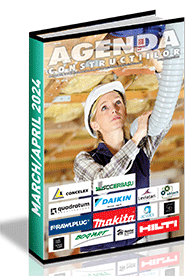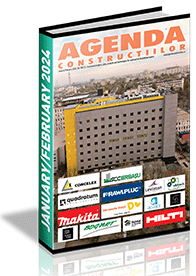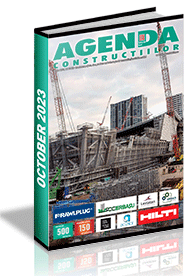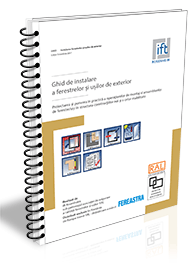| «Consumer rules» represents the new joinery branch paradigm |
| English Section 30 Mai 2011 08:00 |
 If within two or three years, the recession is included in the category of unpleasant experiences necessary for consolidating in Romania a viable market economy, the moment when the end of this negative phenomenon was officially announced has all chances of being remembered by business people as the most expected event of 2011. The news was communicated against a favourable macroeconomic background, materialized in the national currency consolidation, the local industry boom, the balancing of the trade balance and the perspective of a gross domestic product (GDP) growth by approximately 1.5%, as against the previous year. Unfortunately, all these "successes" are by no means mirrored in the incomes of most natural or legal persons. According to specialists’ estimates, a minimum timeframe of one year is required for the positive effects to be materialized in a purchase power growth. If within two or three years, the recession is included in the category of unpleasant experiences necessary for consolidating in Romania a viable market economy, the moment when the end of this negative phenomenon was officially announced has all chances of being remembered by business people as the most expected event of 2011. The news was communicated against a favourable macroeconomic background, materialized in the national currency consolidation, the local industry boom, the balancing of the trade balance and the perspective of a gross domestic product (GDP) growth by approximately 1.5%, as against the previous year. Unfortunately, all these "successes" are by no means mirrored in the incomes of most natural or legal persons. According to specialists’ estimates, a minimum timeframe of one year is required for the positive effects to be materialized in a purchase power growth. This indicator is extremely important, as it represents the main condition for reinstating the ascending trend of consumption. Although the Romanian market has not reached a sufficient maturity level to ensure a sustainable GDP growth based on an increase of final beneficiaries’ expenses, it is clear that only an increase of production in punctual sectors is not enough for a real economic launch. Obviously, the contrary possibility, defining the years preceding the start of recession, when the economic growth was an exclusive consequence of consumption not based on production, but artificially sustained by an excessive crediting system, did not represent an optimum solution (its lack of viability being proven by the respective structure’s rapid failure upon the first signs of financial crisis).
Private resources - the main development support element
For the constructions sector, if the national economy becomes one of the coherent capitalist systems in the near future, consumption growth represents one of the main drivers (if not the most important), as the turnover value recorded in this sector will depend to a great extent on the level of final beneficiaries investments. This does not indicate a minimization of the impact of funds from other resources (bank credits contracted by companies specialized in the development of construction units or direct investments made by financial organizations with speculative activity), but, assuming the installation of a state of normality, it becomes clear that the structure of the segment’s framework will be significantly changed, at least in terms of two key-sectors: the construction of buildings with residential destination, respectively rehabilitation/ modernization actions. The beneficiaries of such works will become, more or less directly, the sector’s main financial supporters. Such a perspective is more difficult to imagine, especially considering that the national habit was to assimilate large projects to an exclusive prerogative of entities with high investment potential. If we analyze the world’s developed markets, we easily notice that the highest share in supporting this kind of projects is held by users. Therefore, it is essential to resume consumption as soon as possible, as this will definitely be the immediate consequence of regaining consumers’ trust in the national economy. Obviously, a great part of the necessary funds will continue to be covered by financial institutions’ resources, but their role will gradually become marginal, as interests will go back to observing acceptable limits. In fact, we currently witness the spreading of a false problem of crediting system inaccessibility, when - with a serious analysis - we could reach the conclusion that the demand level is insignificant, mirroring precisely the economy’s state of uncertainty and beneficiaries’ lack of confidence.
The residential segment windows demand, sustained by private resources
All these elements will have to be considered very carefully by insulating joinery producers, as well, given that the products they promote are perfectly included in the rehabilitation category which will represent - as in most European Union countries - the main development driver, on a medium and long term. Any doubt from this point of view may be easily removed by analyzing the way the sector economy has evolved in Germany where currently over two thirds of the insulating joinery units demand is made up of individual renovation works (although financially sustained by federal authorities). This was the only possibility to allow the window market, in the most developed community country, to record a significant increase, precisely in the recession period. The orientation towards marketing and customer becomes an obligatory requirement in the new market situation, and the rethinking of market approach strategies already represents an essential condition for continuing the sector activity. This does not exclude the future launch of potential collaborations with companies specialized in big residential centre constructions, but the respective market share will be considerably lower than the level recorded before 2008. However, for companies preferring such collaborations, there will still be commercial or administrative units available (office buildings). As for heat rehabilitation public programs, their complete failure is obvious, and the general opinion against such an approach will get stronger with the revealing of technical incompatibilities, particularly noticed in the used materials’ performance and conformity. As often emphasized, the only viable method for carrying out this type of projects is represented by beneficiaries’ direct financial involvement (possibly supported by public funds), in order to guarantee a direct control of the used product quality and means of implementation.
Corrections applied to the labour legislations might reduce disloyal competition
The current background of the activity carried out by companies specialized in the execution of insulating joinery is quite complex, being immediately influenced by a series of elements. The most important impact continued to be exercised by the reorganization measures, dictated by the need to eliminate losses, maintain economic efficacy and increase the chances of staying operational in profitable conditions. Many companies - both among material suppliers and producers - had to resort to the insolvency method, to try and prevent bankruptcy. However, for 2011 this trend is expected to reduce, the market aggregation level being already quite high. Another direct effect was that exercised by the amendment of the labour legislation provisions, which lead to the emergence of tensions between the employer and the employee (although clearly inferior to those recorded by other activity sectors). The harshening of conditions imposed to employees and the granting of more freedom of action to entrepreneurs seems to be a solution potentially leading - on a long term - to the implementation of tougher work discipline, at the same time facilitating productivity growth at a natural pace (superior to the retribution increase). Another element potentially leading to an increase of market discipline would be the harshening of punishments for using labour illegally, in certain cases such a deed implying criminal responsibility. It is not certain that the method will render optimum results, but such a measure could help reduce disloyal competition and all negative elements related thereto. The system is already operational in strongly industrialized countries, but its efficacy in terms of legal provisions application remains to be analyzed. If actions are limited to sanctioning entrepreneurs not belonging to a certain type of customer system, the entire system recovery process will be a failure.
Article published in the May/June 2011 issue of the AGENDA CONSTRUCTIILOR Magazine. For detailed information click here!
|
ABONARE REVISTA (click aici): PROIECTE | INVESTITII | REVISTE | INDEX COMPANII
DATE DE CONTACT: Agenda Constructiilor & Fereastra - Tel/Fax: 021-336.04.16, 031-401.63.88



.gif)













































